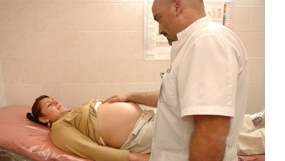Challenge
By 2010, notwithstanding San Juan’s strong economic growth and solid fiscal performance, key provincial human development indicators lagged behind the national average. Despite the fact that public health expenditures amounted to about 30 percent of total provincial social expenditure, maternal and infant mortality were above the national average and non-communicable diseases were a growing problem. The infant mortality rate (IMR) in 2008 was about 14 deaths per 1,000 live births, higher than the national average (13.3 deaths per 1,000 live births). At seven deaths per 100,000 live births, San Juan’s maternal mortality rate (MMR) was almost double the national average. Cardiovascular and respiratory diseases and tumors were the leading causes of adult death in the province, representing about 64 percent of total deaths, followed by external causes and diabetes representing 16 percent of total deaths of the province.
The provinces most important challenges in the Education sector were the high levels of school failure in the first few years of primary education and unequal access to and permanence in schools for children from disadvantaged backgrounds. These weaknesses were evident particularly in primary school where the repetition rates during the first six years exceeds the national mean, and the 2.7 percent desertion rate is well above the national average
Solution
San Juan Province addressed these human development challenges with the support of the World Bank-financed San Juan Social Inclusion and Development Project-SWAP (Sector-wide Approach). The SWAP financed specific programs in those sectors. The Health Sector component of US$28 million complemented two earlier projects by supporting the Ministry of Health in the areas of mother, youth and child health, and non-communicable diseases. The earlier Bank-financed projects were Plan Nacer, which aims to improve access and coverage in maternal and infant population, and the Essential Public Health Functions, which attempts to achieve universal coverage for prioritized health public programs. The Education Sector component of US$19 million supported two concurrent and ongoing programs: Todos Pueden Aprender (“All Can Learn”) and the Jornada Completa (“Full Day”). The component focused on the key challenges of school failure, unequal access, and permanence.
Results
Overall, San Juan Province improved key mother and child health indicators, even surpassing the national average. By the end of the project, permanent safe blood provision in maternities reached 100 percent, and the percentage of pregnant women attending the minimum required number of consultations before birth doubled. Also, the percentage of children with complete immunization in their first year of life was nearly 96 percent by the end of 2013. One of the most remarkable achievements was the registration into a database, created by the Ministry of Health, of the population without health insurance coverage. This valuable database will help the ministry’s budget process and the design and development of health policy in the province.
Communal health workers identified persons with diabetes and ensured that they received proper medical treatment, although the percentage of detected diabetic patients under regular care fell short of the target.
In the “All Can Learn” and “Full Day” programs, education authorities emphasized the training of teachers. The result was a substantial increase in the promotion rate of students in the first school cycle, and a marked improvement in the percentage of students who achieved passing grades in both language and math. The number of Full Day schools reached 42 by December 2011, which was 10 more than the target. By the end of 2013, the number had grown to 51 and 11 more were planned for 2014.
Bank Group Contribution
The SWAP provided a total financing of US$48.65 million, of which US$28 million was destined to the Health component and U$19 million destined to the Education component. The remaining US$1.65 million was utilized to fund technical assistance activities that supported the implementation of the main components.
Partners
The San Juan Investment Promotion Agency (ASJDI) coordinated teams of the Ministries of Health, Education and Finance, and was the main point of contact with Bank. The agency followed progress in the achievement of objectives, producing semi-annual reports and a mid-term report which facilitated Bank supervision of the project. The teams from both ministries mentioned that the contribution received from the Bank’s specialists was extremely useful.
Moving Forward
The programs that were financed are now included in the budgetary process of San Juan Province. This guarantees their funding and continuity. Public officials internalized the institutional and procedural reforms adopted during implementation and will likely continue applying them. Although there is currently no discussion about a follow-up operation the provincial authorities have expressed interest in a second loan of the same type.
The primary project beneficiaries are the users of public health and education services in San Juan Province. Many of these beneficiaries are among the poorest in the province. The institutions benefiting from the project include the provincial Ministries of Health and Education, the Ministry of Finance, and the San Juan Investment Promotion Agency, which is linked to the Ministry of Economic Development and Production, and had the responsibility for the overall management of the project.
